Retail Technologies to Alter In-Store Experience: The Amazon Approach
Updated 19 Mar 2023
10 Min
2756 Views
The digital world with it's conveniences changes our habits and daily routine. Instead of reading a newspaper we read online news. Instead of going to the cinema, we watch films on the Internet. Instead of going shopping more and more people prefer buying things on multiple web portals. Does it mean that physical retail is dead? Should you close your shop immediately? Or there's still a chance to stick it to all online competitors revolutionizing the idea of in-store experience using the latest automation in retail technology and others? It's time to find out!
Is physical retail dying?
E-commerce is crowding physical retail business out. Year by year, day by day, more and more customers are finding e-shopping more convenient and pleasant way to buy things. To understand why it happens and what is the way out, let's check the statistical data to get the holistic picture.
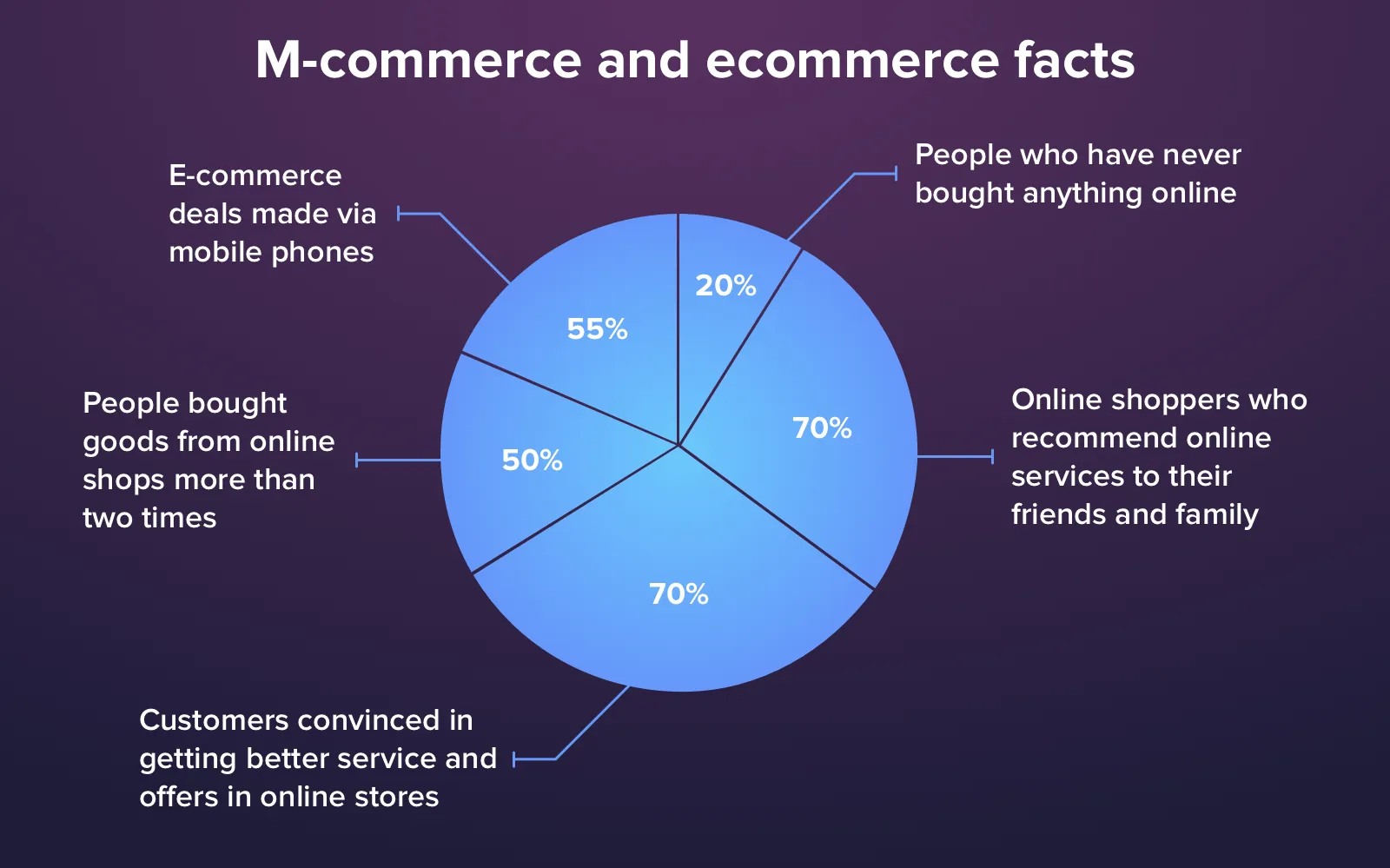
Statistical data on m-commerce and e-commerce
- More than 70% of customers are convinced they would get better service and offers in online stores than in physical ones.
- There are only 20% of people all over the world who have never bought anything online even once. And a half of all Earth's population bought goods from online shops more than twice.
- 55% of all e-commerce deals were made via mobile phones.
- About 70% of online shoppers recommend online services to their friends and family members.
- The profit from the Thanksgiving Day online shopping in 2018 is larger than the previous year sum of almost 20%
- There will be more than 220 million online shoppers only in the United States by 2019.
- In the USA the e-commerce sphere will reach the revenue of more than $480 billion by 2021 compared to $350 billion in 2017.
This data reflects all your worries. Physical stores lose their popularity. In fact, some people believe that in future the humanity will get rid of all shops of this kind and will create mobile apps for anything. We think they overdramatize. Still, physical shops suffer from lack of customers. Here are some of the main reasons why:
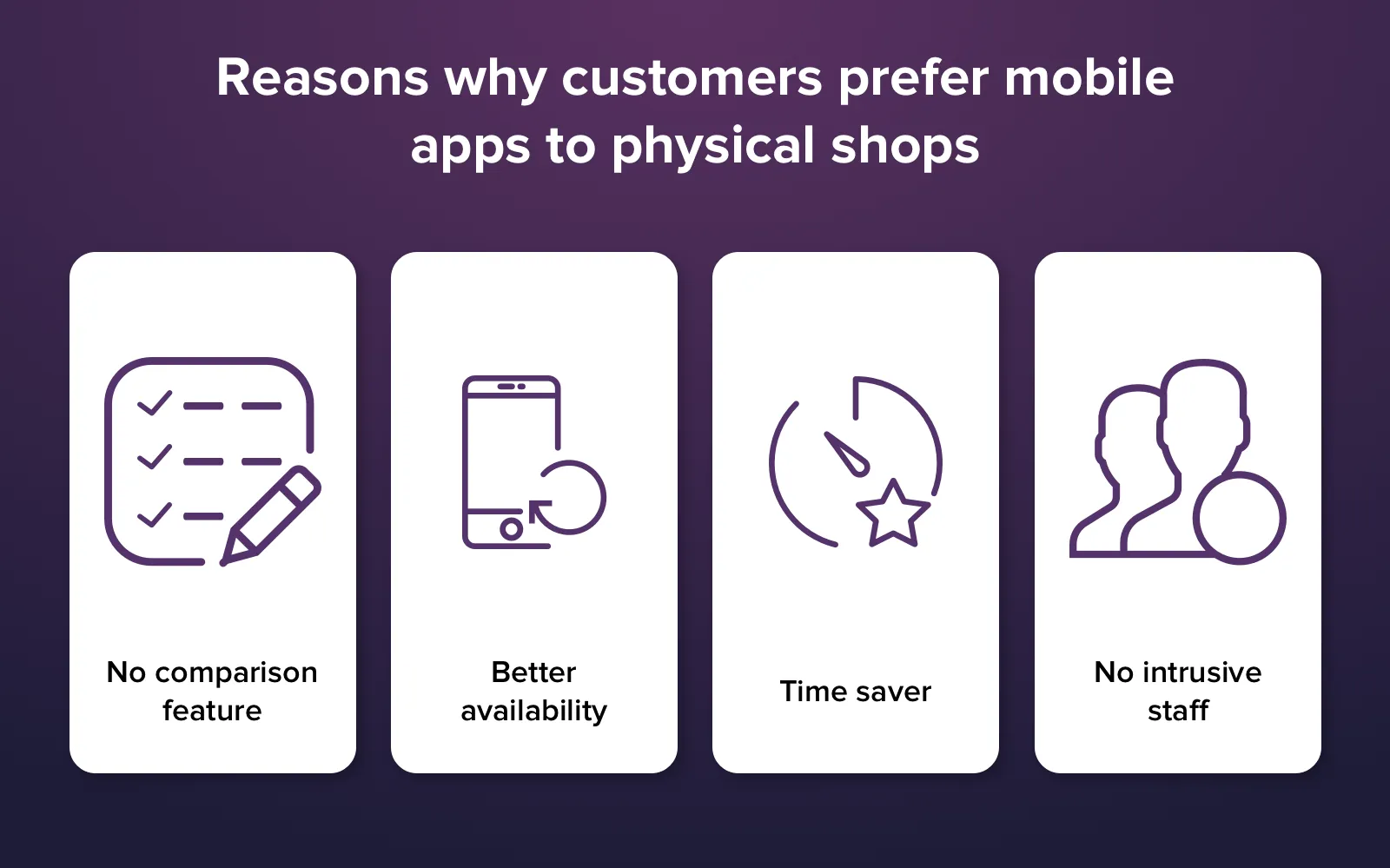
Benefits of retail mobile apps for customers
No comparison feature
Unlike traditional shops where a customer can only compare the goods available in a particular store and only according to their appearance, online stores provide clients with a much wider range of features for a comparison. In online stores, a person can analyze not only the price but also various characteristics, rate by feedback and many more.
Better availability
Even if there isn't an item a customer likes in an online store, he or she can get notifications about it and make a pre-order of the item. The worst situation anyone can imagine is when he or she made a long path to a store and didn't find goods they wanted.
If you think that a mobile retail app development is exactly what your business needs, then read our guide to create a really cool application for your customers!
Time saver
What modern people hate is queues, they hate wasting their time for nothing. Online shops allow customers to shop everywhere and anytime they want, they don't have to spend time on the roads and staying in queues.
No intrusive staff
Another irritation factor is the staff which comes to customers all the time and offers advice. In an online shop, no one bothers clients until they ask for it. And in this case, they can get an online consultation (not in all online shops yet, unfortunately).
All these factors influence customers' perception of comfort, personal approach and convenience of making shopping. Nevertheless, we also have some facts which make us believe that there's still a chance for physical retail in the future.
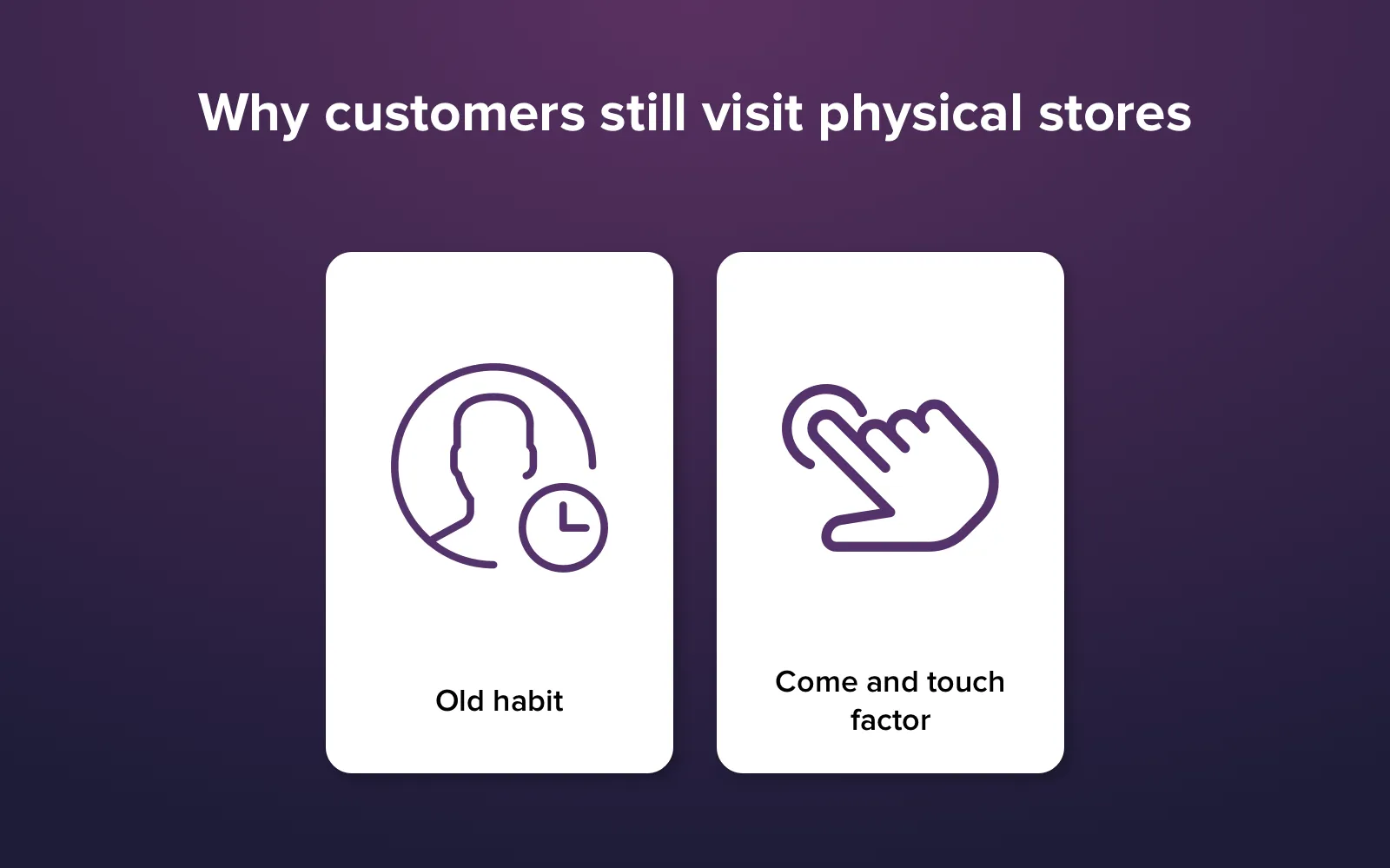
Factors which help physical retail to stay afloat
Old habit
There will always be people who hate online shopping and love going to shops, malls and markets. They like touching the texture of goods, checking the packages, tasting products and only then they pay for them. To tell you the truth, almost all people go to shopping malls from time to time. And we shouldn't forget that there are also customers who don't trust banks and prefer to deal with cash only. For all of them, we will still be working in physical shops.
Come and touch factor
Big dogs rely on physical retail. We are talking about car manufacturers and other companies which offer 'come and touch and then decide' feature. We are also talking about Apple, Sephora, H&M and other mega brands which announced the opening of 3,000 new stores all over the world.
Taking this data into consideration we can conclude that the rumours about the fast death of all physical shops are inaccurate. But we should also keep in mind that such factors as lack of information about products, poor assortment choice, poor services and absence of delivery options will most likely to become the last nail in the coffin of all mediocre retailers. This is the time to make radical decisions and give a second life to your store with the help of retail tech innovation. Just like Amazon did!
Retail tech solutions used in Amazon Go
Amazon Go is a revolutionary decision to change the general in-store experience. Amazon Go is a store of the future which was opened recently in Seattle. The shop is unique because it combines all the latest technology trends in retail industry. There are no checkouts, no lines and no baskets. To come inside, you need an installed Amazon Go app linked to your Amazon account. You don't need any baskets or trolleys here because you can put all the things you take straight into your bag. There are no checkouts or lines and no cashiers because all the things you take are automatically added to your virtual cart. If you changed your mind and put an item back, it's automatically deleted from the cart, especially if you use machine learning in retail or eCommerce machine learning. When you leave the shop, you get a receipt into the Amazon Go app and it charges your Amazon account. Watch this video to see how it all works in reality:
Introducing Amazon Go and the world's most advanced shopping technology
Amazon doesn't tell us much about the technologies used in the retail store and how it works in details. The creators call it 'Just walk out technology'. The technology combines computer vision, deep learning and sensor fusion.
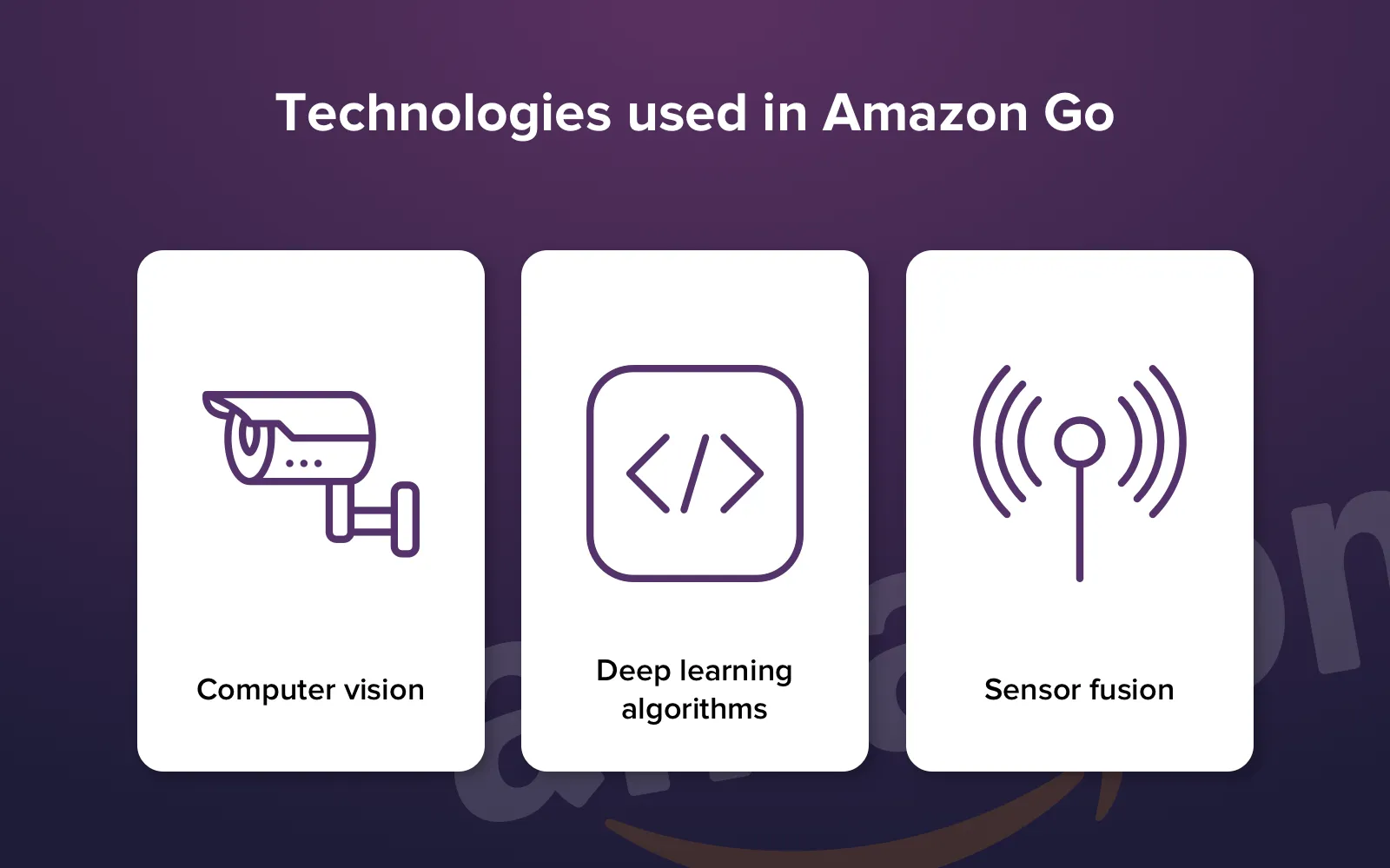
Retail industry technology trends implemented in Amazon Go store
Computer vision
It's a recent retail tech trend which teaches computers to identify objects. In this particular case, a program also 'understands' when a person takes an item and when he or she puts it back on a shelf. To enable the technology, creators placed multiple cameras on a ceiling and shelves themselves.
Deep learning algorithms
Deep learning algorithms are combined into a system which powers computer vision. According to a Recode report, there are lots of people still working on the program and 'teaching' it to identify item correctly.
Sensor fusion
It's a combination of thousands of sensors which track people's location, location of items, weight sensors and many more.
The sum of all these advanced retail technologies, hard work plus long testing period made it possible to create a store of an absolutely new format. We are sure that Amazon spent so much money, efforts and time and created this progressive system not only for one store, that is why we expect the network to grow.
Amazon applied a lot of new retail technologies and hardware in their project, still, there are many more things you may not have thought about which can help you in your store.
Innovative retail technologies for your store
Almost all modern technologies can help you improve your services one way or another. Below you'll find a list of the most promising retail technology services and approaches which will make your customers forget about online shops once and for all.
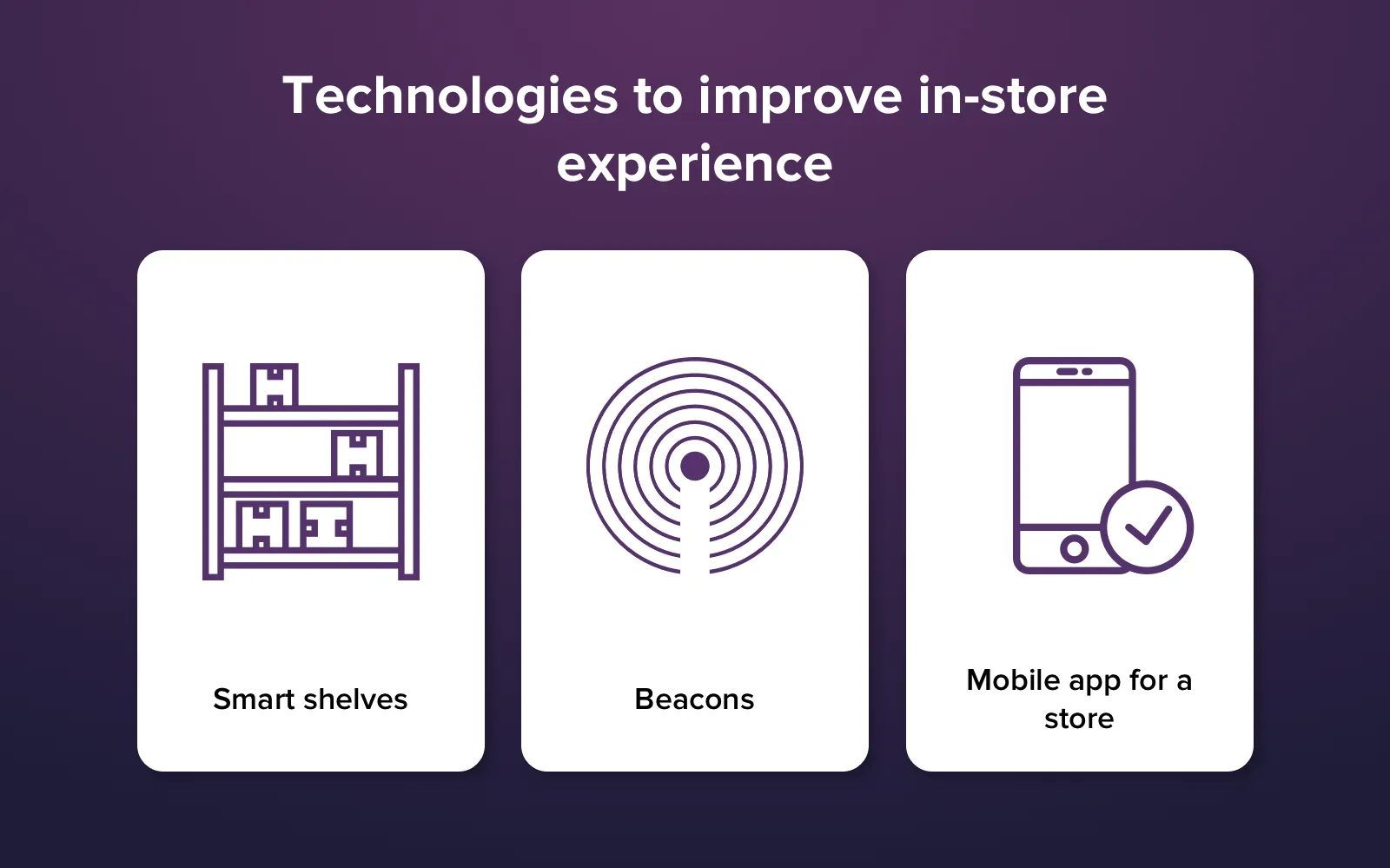
Retail business technologies to transform your store
1. Smart shelf technology
The technology that empowers smart shelves is RFID tags and RFID scanners. Radio Frequency Identification tags are attached to goods and products and a special sensor can read their electromagnetic field and the information hidden there. A shelf equipped with such a system can track the number of items and goods and signal when there are no goods left. The smart shelf solution also tracks and alerts if the goods were misplaced and need to be taken back to their places. Such system can be crucial if the goods you sell in your store require special conditions of storage (ice-cream, for instance). As well as all that, such smart shelf system in tandem with generative AI for retail works perfectly against shoplifters as you can easily track the whole path of an item from the moment it got an RFID tag till the moment it was carried out from a shop.
Have you ever considered a mobile app as a promotion tool for your brand, no? Too bad, find out what advantages your brand can get if you launch one!
Smart shelves also track what items are the most popular and are sold the fastest. This data helps retailers plan procurement of goods and satisfy the customers' needs better. And the last but not the least advantage of such a system is an alert about an expired date. A shelf notifies you about the products which haven't been sold yet but whose date is expiring soon.
Implementation tip. If you decided to implement this technique into your store, you need to have a consultation with an experienced dedicated development team before you buy RFID devices. A scanner and RFID tags are relatively cheap. Nevertheless, the cost of the project depends on the software more than on hardware. Think about the features you want your system to have. Scanner manufacturer can provide their devices with special development tools, so it's better to choose a manufacturer with the development team.
2. Beacons in retail stores
Bluetooth Low Energy devices such as beacons or other IoT sensors can connect customers' mobile phones (only if the Bluetooth mode is on) and send notifications about goods, services, discounts or special offers from a shop when a person is passing by this place. Beacons can work not only with smartphones but with smartwatches as well. Ask a customer if he or she agrees to get notifications from your store and invite visitors to your place using various loyalty programs and rewards. In such a way, retailers using ibeacons engage customers to visit their places and maximize the revenue.
Implementation tip. The implementation of this technology in retail industry is similar to smart shelves. There are a lot of manufacturers of beacon devices, they all have a different configuration. Talk with your retail software development company about the functionality you want and choose the producer according to your needs.
All the pros and cons of the combination beacons plus wearables read in our unbiased review here!
3. Mobile app for a store
As an option, you can create an app like IKEA. Their first mobile app didn't allow customers to buy, just to review the catalogues and see the goods arrangement in a physical store. Such an app can save customer's time when they are looking for something in a big store.The other way is a fully-functioning mobile app development where users should register, where they can collect some bonuses and so on. The secret of such apps is that users stay loyal to a brand or a shop.
Anyway, the cost of such an app depends on the complexity, besides, you can always start with an MVP version which cuts expenses and gives a chance to develop the app according to your customers' needs. If you want to find out the approximate price of building the app, you can use our free app development cost calculator.
When you are rebuilding your store, first of all, you should think about your clients, their problems and their needs. If you are not sure what to start with, you can ask your visitors to leave anonymous feedback and find the weaknesses of your service in such a way. The analysis of this feedback will give you lots of insights and indicate the things which need improvement. And then, choose the interactive retail technologies and devices to solve all the issues. If you want to consult about the best solution for your store, write us and we'll be happy to walk you through it!
Need a really working responsive design for your website? Then don't miss your chance and subscribe to our blog because our next article will reveal all the secrets and hints on the topic!

Evgeniy Altynpara is a CTO and member of the Forbes Councils’ community of tech professionals. He is an expert in software development and technological entrepreneurship and has 10+years of experience in digital transformation consulting in Healthcare, FinTech, Supply Chain and Logistics
Give us your impressions about this article
Give us your impressions about this article